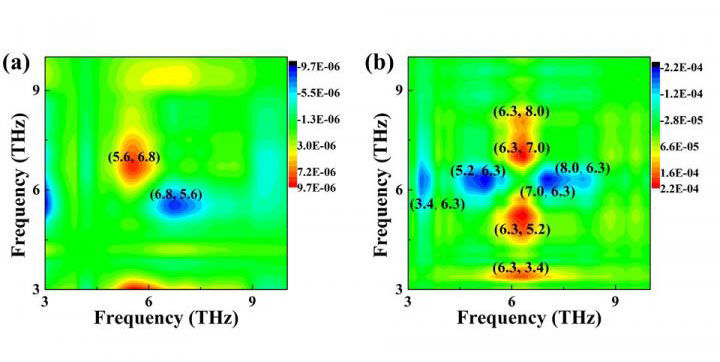https://www.photonics.com/Article.aspx?AID=61861
BEIJING, March 24, 2017 — A combination of terahertz (THz) absorption and 2D correlation spectroscopy (2DCOS) has been used to identify the concentration and pollution sources of PM2.5 (particulate matter less than 2.5 µ in diameter) in the Beijing-Tianjing-Hebei region of China. The THz-2DCOS analysis revealed that samples with high PM2.5 were related to higher THz absorption at selected frequencies. This information was used to determine appropriate emergency measures needed to relieve haze pollution.
Normal PM monitoring approaches are sensitive to PM2.5 concentrations; but identifying pollution sources remains challenging. It is known that THz absorption intensities and bands are closely related to PM2.5 concentrations and components, and that the information hidden in absorption bands can be extracted by combining mathematical methods.
A team of researchers from Beijing Key Laboratory of Optical Detection Technology for Oil and Gas; China University of Petroleum; and Capital Normal University in Beijing compared THz peaks of PM2.5 collected during a red alert period and during a non-red alert period.
Silicon carbide was used as the optical source because of its ability to emit steady, strong emissions with continuous wavelengths in the THz range. Every measurement was processed in a vacuum environment. All of the PM2.5 samples used in the study were collected in the Changping district of Beijing. The spectra of a series of PM2.5 in 3 to 10 THz were obtained with a common Fourier transform infrared (FTIR) spectrometer.

This is a terahertz-2DCOS analysis of PM2.5 during red alert period (a) and normal condition (b). Courtesy of Science China Press.
The researchers applied 2DCOS to absorbance spectra of PM2.5 during China’s first red-alert air pollution period and under normal high-pollution conditions (both in Beijing). By comparing features in synchronous and asynchronous plots of these spectra, they found that sulfate types were different under the two conditions, and that metallic oxides belonging to PM2.5 sources in the normal high-pollution condition were absent during the red alert period. Based on these findings the government placed temporary restrictions on car use and, as a result, the types and quantity of sulfates decreased.
The researchers suggest that it could be useful to develop a real-time monitoring system for air quality in Beijing, given that haze conditions vary with time and location. In the future, metamaterials could be used to measure relatively low densities of PM2.5 in real time.
The research was published in Science China: Physics, Mechanics & Astronomy (doi: 10.1007/s11433-016-0469-4).

No comments:
Post a Comment